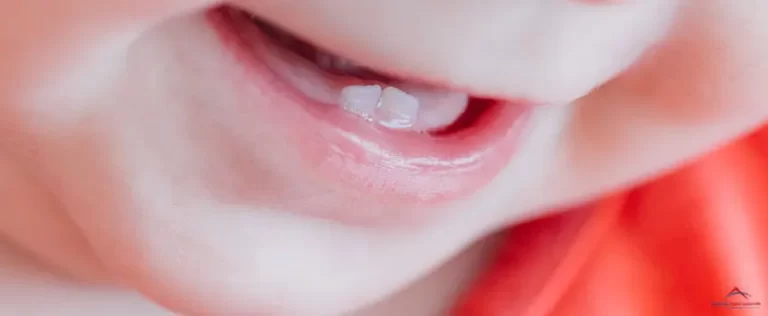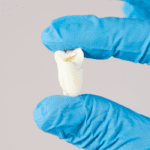If you observe your upper jaw excessively overlapping your bottom jaw when you close your mouth, this may be a sign of an overbite. If you’re looking for ways to fix your overbite, you’ve come to the right place!
Also known as “deep bite” or “buck teeth,” an overbite is a form of abnormal teeth alignment that involves a significant overlap between your top and bottom teeth. This abnormal alignment is also known as a malocclusion. A normal bite only has around one to two millimeters of reach, and your front teeth fit on top of your lower teeth. However, with overbites, your front teeth extend beyond and above your lower front teeth.
There are various types of overbites – each with different complexities during treatment. Minor overbites may not require any treatment as they are considered to be in the normal range. Still, it will be the dentist who examines your overbite and determines whether or not you’ll proceed with additional treatment. With that said, each condition is unique, and there is a particular overbite treatment plan executed to straighten your teeth effectively and safely.
Before we get right to the facts on this topic, let’s first touch on the basics.
What Causes an Overbite?
Overbites can be due to several reasons, which include physical features and certain habits. Among the most common causes are:
1. Genetics
For one, an overbite may be a result of your genes. It is not uncommon for some people to be born with an uneven-sized jaw or a smaller lower or upper jaw. Prominent teeth or overbites can often be hereditary, and you can observe these similarities with your parents, siblings, or other relatives.
As mentioned by the American Dental Association, about 70 percent of children show signs of an overbite, and this may be caused by grinding teeth, temporomandibular joint dysfunction (TMJ), and genetics.
2. Toddler Behaviors
According to a dentist at Laguna Dental Center named Payam Ataii, DMD, overbites can result from behaviors in childhood, such as drinking from milk bottles, consistently using a pacifier, or thumb sucking. These acts cause your tongue to push against the back of your teeth, which initially results in an “open bite,” then eventually leads to an overbite.
3. Common Habits
According to Mahnaz Rashti, DDS, a Beverly Hills periodontist, habits such as nail-biting and chewing inedible objects like pens can also cause this condition upon reaching teenage years and adulthood.
4. Jaw Shape or Size
More importantly, an overbite may often be due to the shape or size of your jaw or teeth, which usually leaves you an uncomfortable space to fit your teeth into. The American Association of Orthodontists points out that overbites are commonly caused by having a smaller jaw compared to the upper jaw.
What Happens if I Don’t Get Immediate Treatment?
If not treated immediately, overbites may leave you with either crooked teeth (for smaller jaws) or widely-spaced teeth (in a broader jaw). Moreover, ignoring your overbite can lead you to significant health complications, such as:
- Jaw pain
- Severe headaches
- Tooth decay and gum disease
- Chewing problems
- Trouble opening and closing your mouth
- Speech difficulty
- Sleep apnea
What are the Treatments for Correcting an Overbite?
Luckily, overbite is one of several dental health conditions that professionals can treat with orthodontic care. Various affordable and effective treatments are used for overbite correction, coupled with a beautiful top and bottom teeth replacement for a perfect smile.
1. Metal or Ceramic Braces
Traditional braces are most commonly used to treat overbites. The severity of overbites can help you identify how long you need to wear braces to achieve the desired result. Although they are usually seen more with children or teenagers, you can also have them in adulthood. Usually, this overbite correction plan performed by a professional orthodontist takes at least one to two years, but the results are always worth the wait.
2. Invisalign
This treatment is usually used for minor malocclusions (such as overbites) in teenagers and adults. It involves a series of custom-molded plastic aligners to your teeth, which then slowly and safely move your teeth to correct their position. For this treatment, it’s best to visit an expert orthodontist.
3. Retainers
Although this does not correct overbites directly, retainers are essential in protecting the results after treatment. You will be treated with one of the multiple retainers to maintain the results, and usually, there will be a 6-month appointment to follow up on your results.
4. Jaw surgery
Also known as “oral surgery,” this procedure is combined with orthognathic therapy. Although very rare, this is more commonly used to treat skeletal overbites in adults, wherein teeth roots and bones are firmly developed and more challenging to move. Most adults, however, can be successfully treated with orthodontic therapy alone.
5. Palate Expansion
This overbite treatment is typically used to treat children or adolescents with an upper jaw that is too small to accommodate adult teeth. Palate expansion usually uses a unique tool that consists of two parts called palatal expanders, which are attached to upper molars, and an expansion screw to gradually move these pieces apart to expand the palate.
If you’re looking for the most-trusted treatment for malocclusions like overbites, our team at Advanced Dental Group can connect you to the best dentist in the field. We are affiliated with the most qualified professionals to satisfy your dental care needs. Give us a call today!





